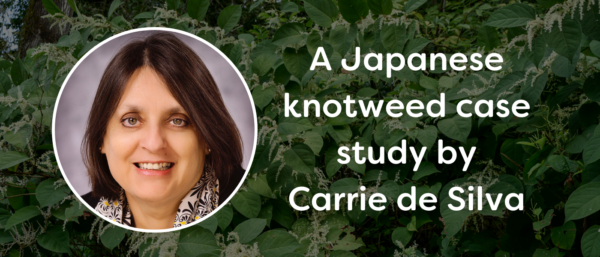The Supreme Court overturns a Court of Appeal ruling on damages for diminution in value of property.

Author: Carrie de Silva, HAUC, LlB (Hons) MA
Davies v Bridgend County Borough Council [2024] SC
Japanese knotweed encroached onto the claimant’s residential premises in South Wales, from the council owned cycleway onto which the terraced house backed. The knotweed had been on the restored former railway line for a long time, acknowledged in the Court of Appeal to be ‘well over 50 years’ – certainly long before 2004 when Marc Davies acquired his property.
It is well established that encroachment of Japanese knotweed can be an actionable nuisance, as seen in the Court of Appeal decision in Williams and Wastell v Railtrack [2018] CA.
It is also well established that, where a nuisance arises before a defendant was responsible for the relevant property, they can still be liable if the nuisance is ongoing and they do nothing to stop it, per Delaware Mansions Ltd v Westminster City Council [2001] HL (a case with reference to encroaching tree roots).
In the Court of Appeal (drawing on the reasoning in Delaware Mansions that the defendant is responsible for ongoing nuisance, even if they had not caused the nuisance) damages were awarded for a residual diminution in value of the property. It was successfully argued that the property value would be diminished due to the property’s association with knotweed, that diminution endured after remediation, as it is considered that knotweed can never be fully eradicated. Even after an eradication programme, there would be limits to the owner’s use and enjoyment of the property as they would not want to disturb dormant roots by significant construction or garden works. Thus £4,900 was awarded for the the property being associated with knotweed, i.e. stigma or blight.
Unsurprisingly, the judgment led to a flurry of claims with the case giving an added dimension to knotweed nuisance litigation. But the effect was to be short lived. In May 2024, the judgment with regard to damages for a diminution in value due to the stigma of an association with knotweed was overturned in the Supreme Court. The reasoning was thus:
The diminution in value occurred many years before the date of action and, indeed, before the date from which culpability arose. Knotweed became an actionable nuisance in 2012 when the RICS released its Information Paper (Japanese Knotweed and residential property, 1st ed., now superseded by the RICS Professional Standard, Japanese Knotweed and residential property, 1st ed., 2022). The law permits a reasonable time to action such guidance, and the court considered liability to arise in 2013 and last until 2018, at which point remediation was implemented.
The lack of action for the knotweed from 2013, the earliest date of liability, did not cause the diminution or any ‘undue interference with the claimant’s use and enjoyment of land’. That had happened due to the earlier, non-actionable encroachment of the knotweed. Delaware supports a claim where there is a continuing nuisance, but all the damage with regard to diminution in value had happened anyway with no element of causation or increase from 2013.
The Supreme Court’s approach was, essentially, an application of the standard ‘but for’ test in tort. Would the damage have occurred but for the defendant’s (actionable) behaviour? If so, there can be no claim. In this case, the council’s lack of action from 2013 to 2018 had no impact on the diminution in the value of the property. There would be scope to establish that the lack of action has caused or enhanced the damage, but that was not made out in this case.
It is worth mentioning, as it is still often misrepresented, that it is no defence to argue that the nuisance arose before the claimant came to the land, that the claimant ‘came to the nuisance’. The claimant can still bring action. Pre-existing nuisance may simply be a factor in the nature of the area but Coventry v Lawrence [2014] SC clearly ruled on this matter.
The key points are as follows:
- Allowing knotweed to encroach is actionable in nuisance.
- There can be a claim for diminution in value of property for the blight/stigma of association after the knotweed has been remediated, but only if there is a clear causal link between the diminution and the defendant.
It might also be noted that there is still differing expert opinion in this area. The botanists differ on the ongoing impact of a former, and well remediated, knotweed infestation. And the valuers differ on the impact on value of current or former knotweed presence (see Savills’ study: Japanese knotweed and prime property, July 2021). But the Supreme Court acknowledged the potential ongoing blight. The lack of damages was simply due to there being no causal link between the diminution in the value of the property and the defendant’s culpability, which did not kick in until 2013.
For those interested in court activity involving ‘greenery’, see Trees and Plants Casebook: key court cases from the 18th to the 21st century (£10 for electronic copy direct from the author: carrie@carriedesilva.co.uk).